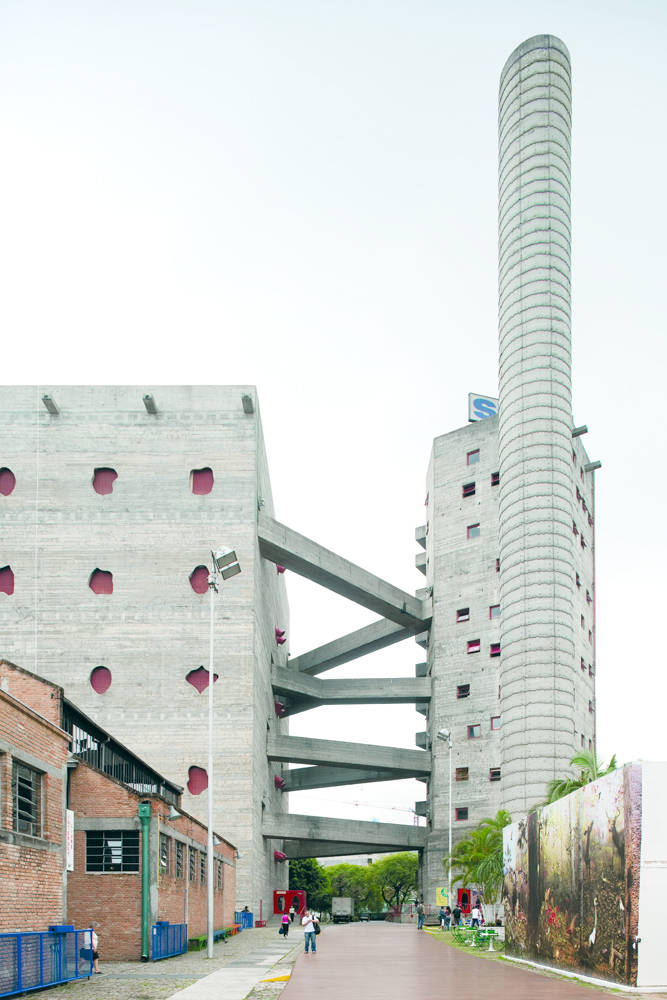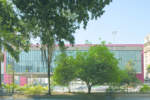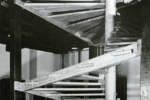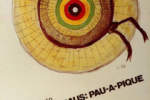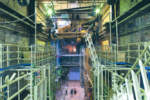Can leisure reshape architecture, or does it remodel the practice of architecture itself? This question calls to mind the work of Lina Bo Bardi (1914-1992), the Italian-born architect who eventually became one of Brazil’s most important architectural figures. When she first arrived in São Paulo in 1946, Brazilian modern architecture was already enjoying a moment of high visibility, yet Bo Bardi became an important presence, helping to distinguish Brazilian modernism from its North American and European counterparts. In 1951 Bo Bardi published “Bela criança” (Beautiful child) in the second issue of “Habitat,” the journal she founded the year before. In that article, Bo Bardi trained her newfound interest in local cultures and wrote of Brazil’s new architecture as something that was “suddenly born beautiful.” She argued that the rudeness and improvisation of the work evidenced the “spontaneity and fervor” of Brazilian popular culture. For Bo Bardi, Brazilian architecture was a “beautiful child” born with the ability to play freely, yet it was via her unique practice that Brazilian modern architecture grew up. Through its growing pains, this sense of playfulness would transform into something more extreme – an architecture of leisure. Leisure was not only an issue for Bo Bardi, but it was part of architectural culture in the twentieth century. The major transformations that took place in the sphere of work, vis-à-vis the new modes of production, and the consequent rise of new reflections upon leisure were both intrinsic components in the agenda of Modern architecture with which Bo Bardi was deliberately affiliated, already in her early professional years in a Fascist Italy. One must remember that the 5th CIAM (International Congress of Modern Architecture), held in Paris in 1937, was devoted to the theme “Logis et Loisirs” (Housing and Leisure) focusing both on the urban and rural problems of housing – then characterized as “the most important problem of the time” by Le Corbusier - and everyday leisure-time activities (cultural and physical) in the Functional City. The CIAM delegates considered as “inseparable” these two fundamental “functions” of urbanism. In the 5th Congress’s report, the debate on leisure is oriented toward the idea that free time should be organized by architecture and urbanism in all scales, both in space and time: within a cité ouvrière or in the countryside; “hebdomadal” leisure activities distinguished from “annual” ones. In this document, for example, Georges-Henri Rivière, curator of the French National Museum of Arts and Popular Traditions defends in his intervention the concept of a “Rural Museum” or “Musée de Terroir” dedicated to “folklore” as a new modality of leisure. Indeed these and other premises stated both in an inter- and postwar contexts by the CIAM shed a new light on the reconstruction of a destroyed Europe and on the construction of a new lifestyle, through the defeat of the consequential housing deficit and damage of public buildings. It is true that none of the Wars affected the overseas Brazilian territory, but housing was still a problem when Bo Bardi started her practice in Brazil, as it is until nowadays. Yet even before the country’s poverty and housing conditions, she would still dedicate her work to the question of leisure. Bo Bardi’s projects can be seen as an attempt to give leisure a cultural, didactic and playful dimension. When she was hired by the president of the University of Bahia in 1958 to teach architectural theory in Salvador, a city significantly marked by social problems as most of Brazilian states’ capitals, but also marked by a strong popular culture, she would bring back the 1937 CIAM’s binomial when she signed in that same year “Casas ou Museus?” (“Houses or Museums?”). This essay, published in the Sunday column that Bo Bardi authored in a local daily, Diário de Notícias, in which she supported the creation of the Museum of Sacred Art of Santa Teresa was not by chance introduced by the following dilemma: “What comes first, houses or museums?” Bo Bardi’s modern vein would certainly guide her to answer: “All should come at once.” It is no coincidence that in the following year, Bo Bardi was commissioned the Museum of Modern Art of Bahia (MAMB) and the Museum of Popular Art of Bahia, both to be located in Salvador. In an a posteriori reflection upon the former in 1967, she explained that the “phenomenon Museum of Modern Art” is typical of a new country because the countries of old culture only create museums on the basis of an important collection where, in Bo Bardi’s view, “there are no museums of reduced collection or no collection at all.” For Bo Bardi, in a new country like Brazil the word Museum had another meaning than to just “conserve.” Therefore, according to her, “the Museum of Modern Art of Bahia was not a museum in the traditional sense of the term”: this Museum had nothing to conserve vis-à-vis Bahia’s misery. In Bo Bardi’s words: “Its activities were rather oriented towards the creation of a cultural movement, assuming the values of a historically poor culture, could lucidly, relying on a popular experience (rigorously distinct from folklore), enter the real world of modern culture.” Differently from Rivière’s plea in the 5th CIAM, Bo Bardi emphatically opposed the concept of popular culture to that of folklore, a category that she considered a static legacy derived from a paternalistic control of Brazilian cultural representatives, related to issues of consumption and tourism. Founded in 1960, four years before the military coup d’état, the MAMB that Bo Bardi not only curated but also directed until the dictatorship period – guaranteeing its gratuity - intensely participated in the rich cultural scene of Bahia, through its connections with the University and with avant-garde movements in arts, theater and cinema, such as Glauber Rocha’s “Cinema Novo” (New Cinema), which was still incipient in those years. The MAMB was provisionally installed in the foyer of the Castro Alves Theater but in 1966 it moved to the so-called Solar do Unhão, an ensemble of historic buildings erected on Salvador’s seafront in the sixteenth century that was renovated by Bo Bardi, an emplacement that originally held the Museum of Popular Art. It was in the interior of this complex’s main building that she designed a magnificent central staircase fitting into the existing wood frame. The inspiration for the simple joints that attaches the steps to the existing wooden columns came from the construction of ox carts that Bo Bardi saw in the backlands of the country. Bo Bardi’s most important works were devoted to explorations of leisure at all scales and hardly ever in “the traditional sense of the term.” From the MAMB and the Museum of Popular Art in Salvador (1959) to the SESC-Pompeia cultural and leisure center in São Paulo (1977), and even to the remarkable exhibits she placed in the latter, her architecture maintained the same spirit she outlined in “Bela criança.” Leisure and playfulness were aspects of function as much as they were intrinsic components of Bo Bardi’s own creative process and expressivity. Acting as a sort of “bricoleur,” in an almost childlike attitude, she aimed to combine Brazilian everyday life and popular culture – such as in the Solar do Unhão’s staircase – integrating into her projects things and situations she would find in the streets or in the construction site. Freedom and playfulness were also reflected in Bo Bardi’s informal drawings, in their incorporation of pencil, pen, watercolor and collage to narrate spaces transformed and humanized by her “findings”: people, animals, plants and sculptures. This is because for Bo Bardi, leisure was more than the occupation of free time outside the world of labor: leisure was essential to labor. But again, differently from the delegates of the 5th CIAM, Bo Bardi did not believe that leisure should be definitively shaped by architecture. For one of her most important commissions, the Museum of Art of São Paulo (1957–1968), Bo Bardi stressed the existence of an interstitial void she envisaged as a ‘belvedere.’ The magnificent design comprised two parts: a glazed body hung from two enormous concrete “porticos”, with its lower half buried underneath a plinth. The museum is depicted as a structural frame for an indefinite space of the “belvedere” with open programmable space. One unanticipated reaction was from the American musician John Cage. Upon encountering the museum’s vast span he exited his car and with arms raised shouted, “It is the architecture of freedom.” According to Bo Bardi in an article published in 19907, Cage was able to communicate what she wanted to say when she designed that space for leisure: the museum was a “nothing” but a search for freedom, the capacity of being free before things. Leisure, for Bo Bardi, should reshape architecture and life.
Vanessa Grossman is an architect graduated from the School of Architecture and Urban Planning of the University of São Paulo. After earning a Master degree in history of architecture from the Paris 1 Panthéon-Sorbonne University, she is now a Ph.D. candidate in history and theory of architecture at the Princeton University School of Architecture where she continues her research on the history of the modern movement both in Brazil and in France.


